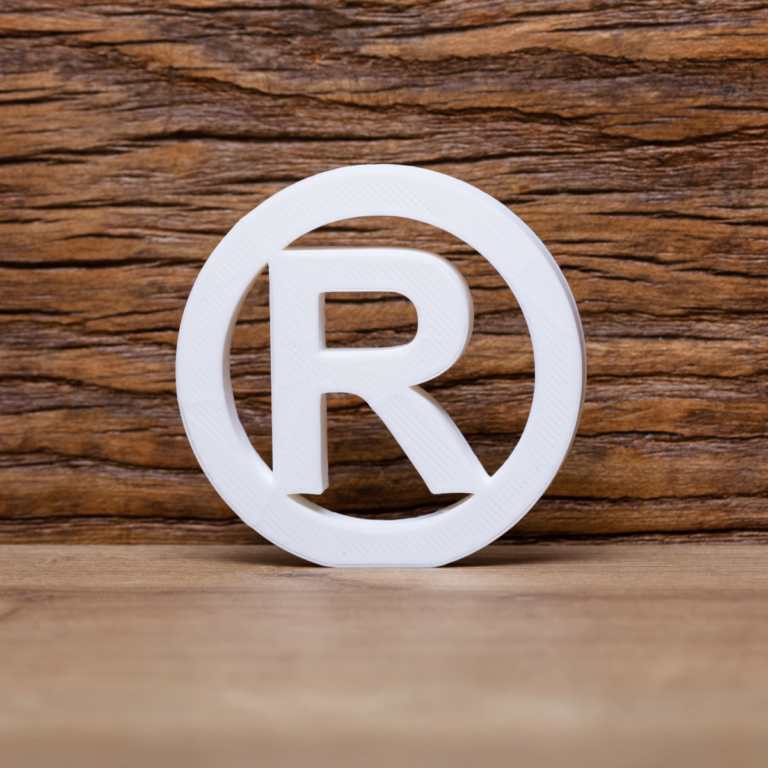To show that a word or logo is legally protected as a trademark, trademark owners regularly use the ® symbol or the TM suffix. Both symbols have their origins in US law, where they are relevant to the question of the existence of claims for damages. In this country, their use is not only not required, but – if used incorrectly – even anti-competitive. We will show you what you need to bear in mind when using ® and TM.
® and TM in US law
® as well as TM have their origin in Anglo-American law. There, the ® symbol serves as an indication that a sign is protected by a trademark registered with the US Trademark Office (USPTO). If the sign is not registered as a trademark, but is used as a trademark (so-called unregistered trademark), this can be indicated with the TM sign. Both symbols – the ® as well as the TM – are relevant with regard to the existence of claims for damages in the event of trademark infringement. In the USA, the trademark owner can only claim damages for trademark infringement if the infringer was aware of the existing trademark protection.
Use of ® and TM in Germany
In Germany, too, company names and trademarks are regularly marked with the ® symbol or the suffix TM to indicate (supposedly) existing trademark protection. Unlike in the USA, this is not advantageous or even necessary. The existence of claims for damages in the event of trademark infringement does not require the trademark owner to have drawn attention to existing trademark protection and the infringer to have been aware of such protection.
If the additions are to be used nevertheless, a few details must be observed in order to avoid a breach of competition law, which can be warned by competitors or consumer protection associations for a fee and prosecuted in court. Such an infringement can always be considered if the trademark protection as such or the scope is misleading.
No misleading use of the ® symbol
If the trademark is entered in the register (and not just applied for), the ® symbol can be used to indicate the existing trademark protection. It is advisable to use the trademark as it is entered in the register. If the protection expires, e.g. because the trademark was not renewed, the ® must be removed.
Furthermore, the reference to trademark protection should only cover the trademark elements that are protected as a trademark. If only the company name is registered as a trademark for a combination trademark, e.g. company name + product name, the ® symbol may not be placed after the product name, but only after the company name. The same applies to a word/figurative mark if only one of the components is protected.
If the trademark marked with the ® symbol is used to advertise certain goods and services, the trademark protection must actually extend to these goods and services.
If reference is made to trademark protection in advertising materials or on a website with the ® symbol and such protection does not exist everywhere where materials are available or the website can be accessed, the question of a possible infringement of competition law also arises in these countries. In these cases, it is advisable to indicate, e.g. by means of a * text, that trademark protection does not exist everywhere, but only in certain countries, in order to avoid misleading the targeted public.
No misleading use of the TM symbol
There is no uniform case law in Germany with regard to the use of the TM symbol.
Some courts equate the TM symbol with the ® symbol and consider its use to be permissible only if the trademark is entered in the register. Other courts consider the use of a trademark that has already been applied for but not yet registered to be permissible.
In a decision from 2013, the Court of Appeal in Berlin found that the German-speaking public, insofar as it is familiar with the TM symbol at all, would understand the use of this symbol in Germany to mean that the trademark thus identified has been applied for but not yet entered in the register. Consequently, the use of the TM symbol in connection with a merely registered trademark would not be misleading and would therefore not constitute an infringement of competition law.
In order to avoid liability risks and as long as the question of the admissible use of the TM symbol has not yet been finally decided by the Federal Court of Justice, we advise against using the symbol in connection with trademarks that have not yet been registered.
Conclusion
Unlike in the USA, for example, the use of the ® and TM symbols is not required, but is customary and permissible under certain conditions. Ultimately, the simple rule of thumb is that the use of symbols must not suggest more trademark protection than actually exists.




